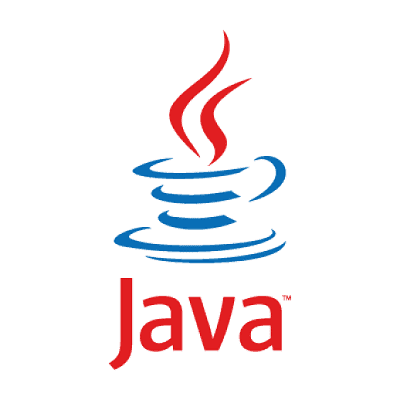Description
the goal of this research was to test the viability of utilizing a multiagent system in implementing a sensor web-based structural health monitoring system. The technologies reviewed here were researched and tested with the aim of creating such a sensor web.
The architecture discussed, which utilizes a multiagent system for control of a structural health monitoring sensor web, will utilize pre-calibrated classifiers created from machine learning techniques to characterize acoustic emissions into identifiable categories.
This collaborative sensor web will allow for a flexible and robust system that will be able to adapt to both standard and unforeseen events by breaking down tasks, allowing for large tasks to be more efficiently handled. Though this proposed approach of an agent-based structural health monitoring system was primarily for the benefit of the NASA-CAS (National Aeronautics and Space Administration Center for Aviation Safety) at A&T, there are numerous industries and applications that could greatly benefit from a similarly architecture.
The aim of this architecture is to create an autonomous system that takes some of the burden off personnel monitoring the structural integrity of an aircraft. By creating inferences as to the structural health of a system based on the acoustic emissions received from piezoelectric sensors, in essence, the wireless sensor network will act as skin. This will allow the characteristics and locations of acoustic emission sources to be more accurately relayed to controllers in a timely manner because relevant data will be continuously communicated, processed and characterized via agents. In the end, adding this system to the safety processes already in place for monitoring the structural health of airplanes will allow for a much more reliable and safe system.

References
[01] Sun SPOT World, Sunspot world program the world, (2010, January). Retrieved March 20, 2013, from http://sunspotworld.com/vision.html
[02] Caicedo,A., The Sun Small Programmable Object Technology(Sun SPOT): Java™ Technology-Based Wireless Sensor Networks,
http://www.austinjug.org/presentations/SunSpots.pdf
[03] MICA z Wireless Measurement System, Crossbow, Retrieved March 20, 2013, from http://www.docstoc.com/docs/20049970/MICAz-Datasheet
[04] Kephart, J.O. & Chess, D. M. (2003). The Vision of Autonomic Computing. Computer, vol. 36, no. 1, 2003, pp. 41–50.
[05] Luck, M & McBurney, P & Preist, C (2003, January). Agent Technology: Enabling Next Generation Computing, AgentLinkII, http://www.agentlink.org/roadmap/al2/roadmap.pdf
[06] Labrou, Y. & Finin, T., Semantics and Conversations for an Agent Communication Language, http://arxiv.org/pdf/cs.MA/9809034.pdf
[07] Boella, G. & Damiano, R. & Hulstijn, J. & VanderTorre (2006). L., A Common Ontology of Agent Communication Languages: Modeling Mental Attitudes and Social Commitments using Roles, http://www.di.unito.it/~guido/articoli/30-ao07b.pdf
[08] Vasudevan, V. (1998). Comparing Agent Communication Languages, http://actr. psy.cmu.edu/~douglass/Douglass/Agents/TopicPapers/KQML/9807-comparing-ACLs.pdf
[09] Wooldridge, M. (2009, June 22). An Introduction to MultiAgent Systems, 2nd edition Wiley
[10] Davis, R., and Smith, R.G. (1988). Negotiation as a Metaphor for Distributed Problem Solving. In: Bond, A., and Gasser, L. eds. Readings in Distributed Artificial Intelligence , 333-356. San Mateo, Calif.: Morgan Kaufmann.
[11] The Foundation for Intelligent Physical Agents (2012). Retrieved March 20, 2013, from http://www.fipa.org/
[12] The Cricket Indoor Location System, An NMS Project, (2006, March 13), Retrieved March 20, 2013, from http://cricket.csail.mit.edu/
[13] Imote2, HIGH PERFORMANCE WIRELESS SENSOR NETWORK NODE, http://bullseye.xbow.com:81/Products/Product_pdf_files/Wireless_pdf/Imote2_Datasheet.pdf
[14] Rice, J. A. & Spencer, B.F. Jr. (2008). Structural health monitoring sensor development for the Imote2 platform http://sstl.cee.illinois.edu/papers/SPIE08_Rice_Paper.pdf
[15] Liggins, M. E. & Hall, D. L. & Llinas, J.(2008). Multisensor Data Fusion, Second Edition. Theory and Practice (Multisensor Data Fusion). CRC,
[16] Hall, D. L. & McMullen, S. A. H. (2004). Mathematical Techniques in Multisensor Data Fusion
[17] National Aeronautics and Space Administration, Data Driven Prognostics, Retrieved March 20, 2013, from http://ti.arc.nasa.gov/tech/dash/pcoe/data-driven-prognostics/
[18] Fok, C. L. (2008, April 9). Agilla, A Mobile Agent Middleware for Wireless Sensor Networks, Retrieved March 20, 2013, from http://mobilab.cse.wustl.edu/projects/agilla/
[19] Lange, D. B. & Oshima, M(1999, March).Seven Good Reasons for Mobile Agents, Communications of ACM, , Vol. 42, No. 3.
[20] Mobile Agents, Intelligent Assistants on the Internet, http://www.itswtech.org/Lec/Manal%28system%20programming%29/simeners_B/Mobil e_Agent.pdf
[21] Wooldridge, M. & Jennings, N. & Kenney, D.(2000). The Gaia Methodology for Agent- Oriented Analysis and Design, Kluwer Academic Publishers, Boston,
[22] FIPA, The Foundation for Intelligent Physical Agents, IEEE Foundation for Intelligent Physical Agents, (2012). Retrieved March 20, 2013, from http://www.fipa.org/
[23] Friedman-Hill, E.(2003). JESS in action, Rule-Based system in Java [24] Reinhardt, A.(2009). Exploiting Platform Heterogeneity in Wireless Sensor Networks for Cooperative Data Processing, Retrieved March 20, 2013, from http://www.ti5.tuharburg. de/events/fgsn09/proceedings/fgsn_021_slides.pdf
[25] Wang, P.(2010). Python Evangelism 101 or Python Meets The Enterprise, conference.scipy.org/scipy2010/slides/lightning/peter_wang_python_evangelism.pdf
[26] NumPy, (2012). Retrieved March 20, 2013 http://numpy.scipy.org/
[27] OnLamp.com Python DevCenter, Broadcasting with Python, (2000, September 27), Retrieved March 20, 2013, from http://onlamp.com/pub/a/python/2000/09/27/numerically.html
[28] deBuyl , P(2012, March 23)., Retrieved March 20, 2013, from http://www.scipy.org/
[29] Hall, D. & Llinas, J., An Introduction to Multisensor Data Fusion, http://www.hh.se/download/18.70cf2e49129168da0158000134101/hall-multisensordatafusion.pdf
[30] TinyOS, (2010). Retrieved March 20, 2013, from http://www.tinyos.net/
OpenCV and Java code for digital Image Steganography and Steganalysis
JAVA Code of thesis ( Supporting QoS in Wireless Sensor Networks Using Cellular Learning Automata )



Louise –
Great project. Just what I wanted.